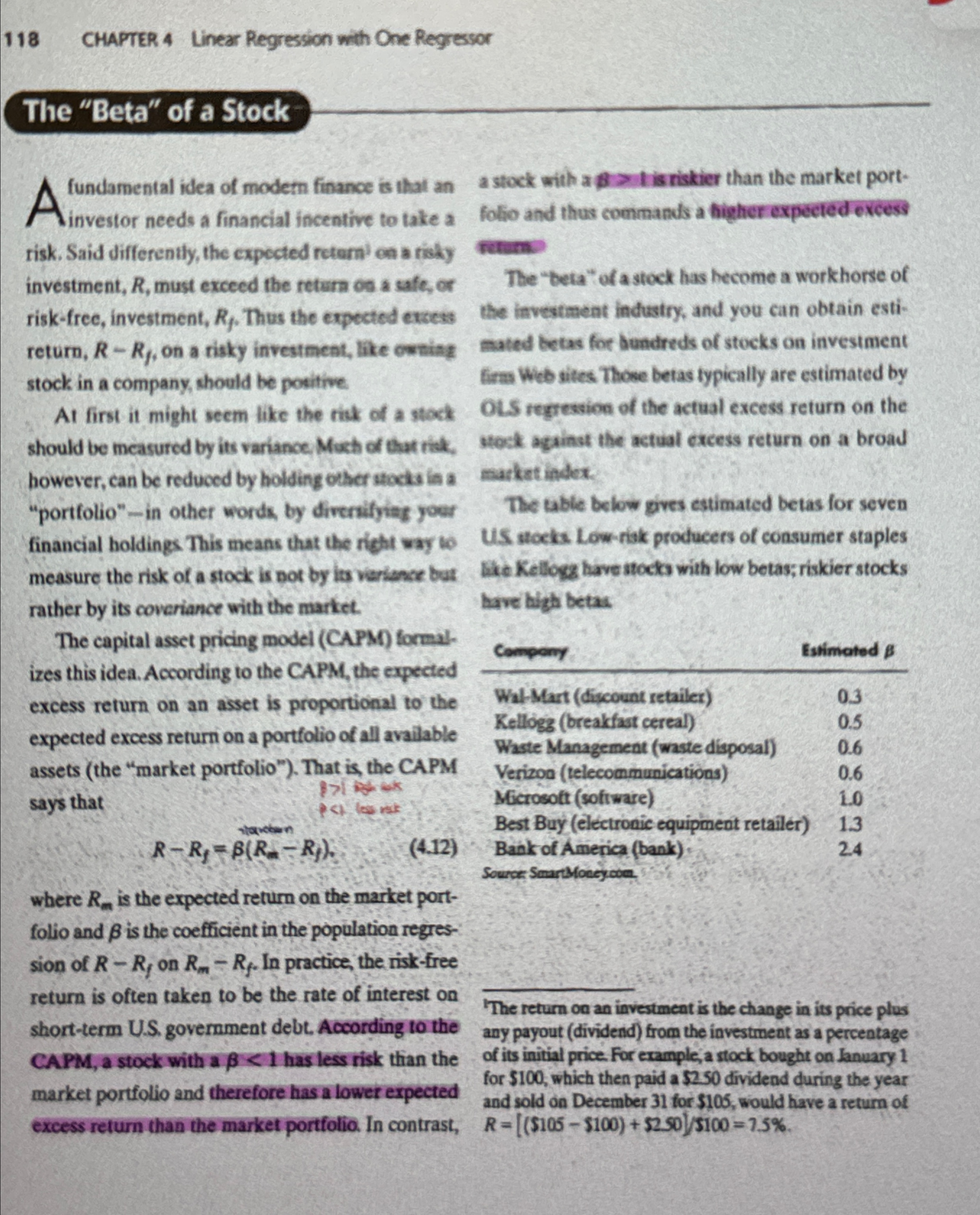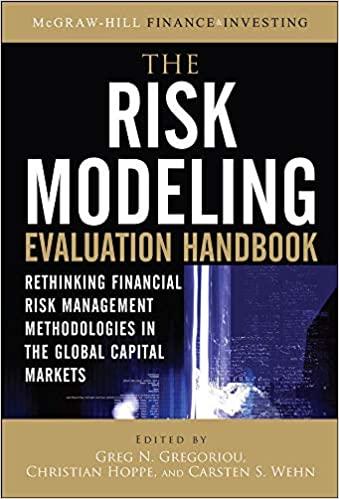Answered step by step
Verified Expert Solution
Question
1 Approved Answer
Read the box The Beta of a Stock in Section 4 . 2 . a . Suppose that the value of is greater than 1
Read the box "The "Beta" of a Stock" in Section
a Suppose that the value of is greater than for a particular stock. Show that the variance of for this stock is greater than the variance of
b Suppose that the value of is less than for a particular stock. Is it possible that variance of for this stock is greater than the variance of Hint Don't forget the regression error.
c In a given year, the rate of return on month Treasury bills is and the rate of return on a large diversified portfolio of stocks the S&P is For each company listed in the table in the box, use the estimated value of to estimate the stock's expected rate of return.
CHAPTER Linear Regression with One Regressor
The "Beta" of a Stock fundamental idea of modern finance is that an investor needs a financial incentive to take a risk. Said differently, the expocted rctern' en a risky investment, must exceed the retarn os a safe, or riskfrec, investment, Thus the expected exsess return, on a risky investment, like owniag stock in a company, should be positive.
At first it might seem like the riak of a stock should be measured by its variance, Much of that risk, however, can be reduced by holding other stocls in a "portfolio"in other words, by diversifyiar your financial holdings. This means that the right way to measure the risk of a stock is not by its varlance but rather by its coveriance with the market.
The capital asset pricing model CAPM formalizes this idea. According to the CAPM, the expected excess return on an asset is proportional to the expected excess returni on a portfolio of all available assets the "market portfolio" That is the CAPM says that int ithek a lears
where is the expected return on the market portfolio and is the coefficient in the population regression of on In practice, the riskfree return is often taken to be the rate of interest on shortterm US government debt. According to the CAPM, a stock with a has less risk than the market portfolio and therefore has a lower expected excess return than the market portfolio. In contrast,
a stock with & tis riskier than the market portfolio and thus commands a higher expected excess returs.
The "beta" of a stock has hecome a workhorse of the investmeat industry, and you can obtain estimated betas for bundreds of stocks on investment firs Web sites Those betas typically are estimated by OLS regression of the actual excess return on the stock agrainst the actual excess return on a broad markatindex.
The table below gives estimated betas for seven US stocks Lowriak producers of consumer staples Lhe Kellogg have stock with low betas; riskier stocks have bigh betas
tableComponyEstimoted

Step by Step Solution
There are 3 Steps involved in it
Step: 1

Get Instant Access to Expert-Tailored Solutions
See step-by-step solutions with expert insights and AI powered tools for academic success
Step: 2

Step: 3

Ace Your Homework with AI
Get the answers you need in no time with our AI-driven, step-by-step assistance
Get Started


